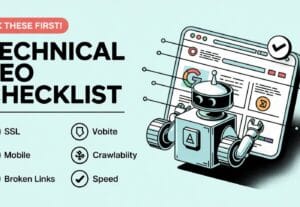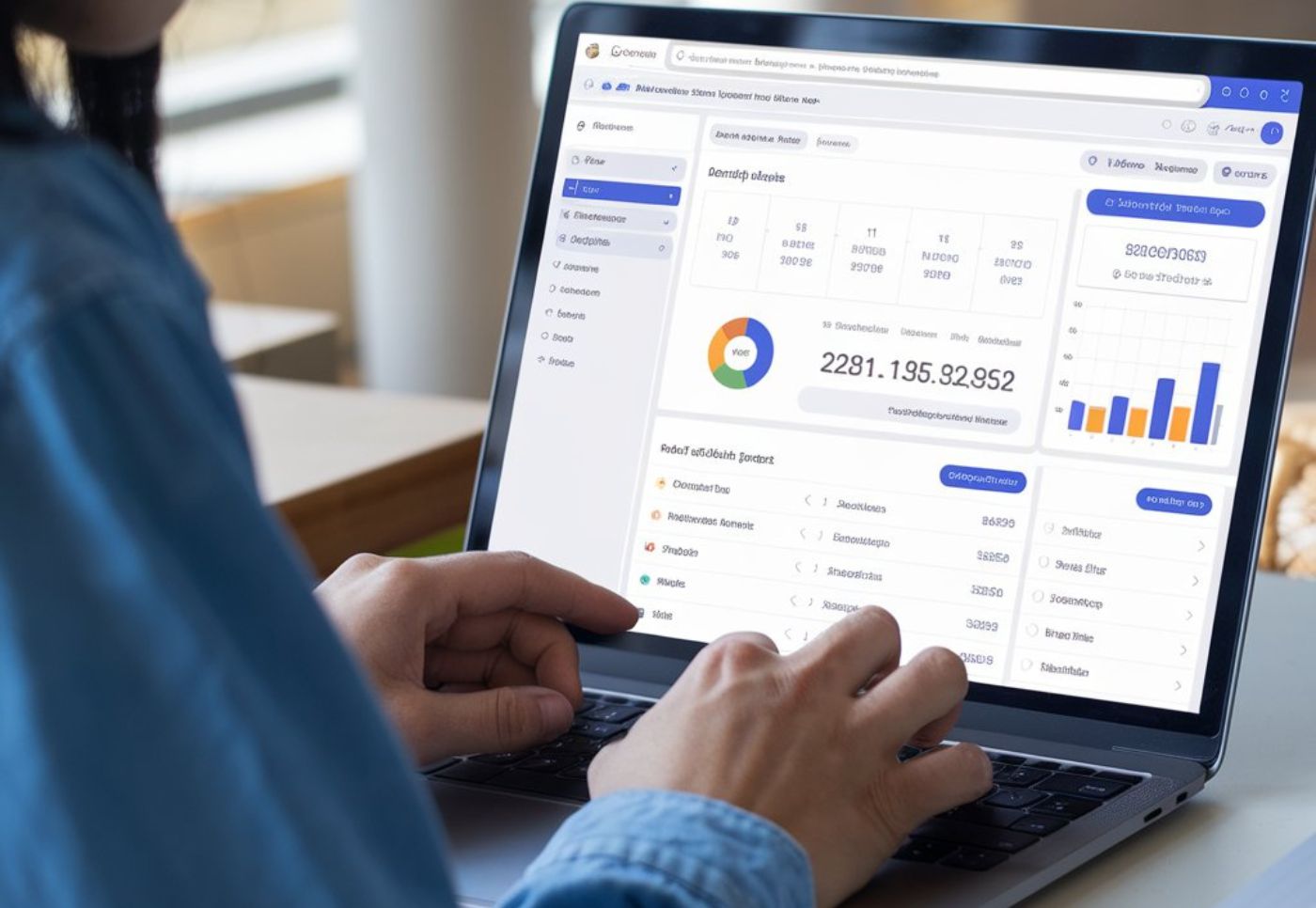Technical SEO: 7 Proven Steps to Boost Rankings

INTRODUCTION
Ever feel like your content should be ranking higher, but it’s just not showing up in search results? You’re not alone. Great content is only half the battle — the other half? Technical SEO.
Think of technical SEO as the foundation of your website. Without it, even the best content won’t perform well. Google needs to be able to crawl, index, and understand your site quickly and accurately. If you skip the technical side, your site becomes invisible — no matter how much effort you put into your blogs or keywords.
In this comprehensive guide, we’re breaking down a beginner-friendly checklist that ensures your site is optimized for search engines, fast for users, and ready to climb the rankings.
 Table of Contents
Table of Contents
Why Technical SEO Matters
Technical SEO ensures that search engines can find, crawl, render, and index your web pages without issues. If even one step is blocked, you’ll struggle to rank — no matter how strong your content or backlinks are.
Analogy: Your website is like a house. Content is the furniture, but technical SEO is the blueprint and foundation. If it’s not solid, everything else falls apart.
Key Benefits of Technical SEO:
Better indexation and visibility
Higher organic rankings
Improved site speed and user experience
Lower bounce rates
Stronger performance on mobile and Core Web Vitals
Essential Technical SEO Tools to Use
You don’t need to be a developer to audit . Here are tools that do the heavy lifting:
| Tool | Purpose | External Link |
|---|---|---|
| Google Search Console | Indexing, crawl errors, sitemaps | https://search.google.com/search-console |
| Screaming Frog | Crawl site like Google | https://www.screamingfrog.co.uk/seo-spider/ |
| PageSpeed Insights | Core Web Vitals & speed | https://pagespeed.web.dev |
| Ahrefs Site Audit | Deep technical insights | https://ahrefs.com/site-audit |
| Semrush Site Audit | Fix crawlability & UX issues | https://www.semrush.com/siteaudit/ |
| Mobile-Friendly Test | Test mobile UX | https://search.google.com/test/mobile-friendly |
 Complete Technical SEO Checklist
Complete Technical SEO Checklist
Ready to take action? Here’s your step-by-step list.
1. Use HTTPS
Secure your site with an SSL certificate. Google gives ranking preference to secure sites.
Test it: Look for the 🔒 padlock in your URL bar technical seo.
2. Ensure Mobile-Friendliness
Your site must be responsive across all devices. Use Google’s Mobile-Friendly Test to check.
3. Fix Crawlability Issues
Check your robots.txt file and ensure it doesn’t block important pages. Submit a clean XML sitemap to Search Console.
4. Improve Page Speed & Core Web Vitals
Run PageSpeed Insights.
Key metrics:
LCP (Largest Contentful Paint) < 2.5s
FID (First Input Delay) < 100ms
CLS (Cumulative Layout Shift) < 0.1
Tip: Compress images, use lazy loading, and minimize JavaScript.
5. Fix Broken Links & Redirects
Use Screaming Frog or Ahrefs to detect:
404 errors
Broken internal/external links
Improper redirects
Set up 301 redirects for removed or updated URLs technical seo.
6. Use Structured Data (Schema Markup)
Add schema for products, articles, events, FAQs. It improves search visibility via rich results.
Test it here: https://search.google.com/test/rich-results
7. Clean Up Your URL Structure
Use short, keyword-rich, and hyphen-separated URLs.
Bad: /services/page.php?id=123
Good: /digital-marketing-services
8. Canonical Tags
Avoid duplicate content issues. Use <link rel="canonical"> to signal the original version of a page.
9. Create & Submit XML Sitemap
Use tools like Yoast SEO (WordPress) or Screaming Frog to auto-generate.
Submit via: Google Search Console
10. Check Index Status Regularly
Go to GSC → Coverage Report. Ensure your key pages are indexed and valid.
11. Avoid Duplicate Content
Use canonical tags, noindex tags, or parameter handling via GSC to avoid thin or duplicate pages from getting indexed.
Real-World Examples and Case Studies
Real-Life Scenario:
A client’s ecommerce site wasn’t getting indexed. After checking GSC, we found their robots.txt was blocking the entire site. One change and 2 weeks later, they saw a +400% boost in traffic.
Tool Example:
Run your domain through Screaming Frog to detect crawl issues like broken links, redirects, and blocked resources in minutes.
Stat: According to Backlinko, websites with fast loading times and clean URL structures see 34% higher dwell time and 20% better rankings.
How to Track and Measure Technical SEO Success
Key Metrics to Watch:
Crawl stats in Google Search Console
Index coverage (valid pages)
Core Web Vitals (PageSpeed Insights)
Organic impressions
Mobile usability
Bonus Tip: Set monthly reminders to run a Screaming Frog audit and compare changes.
FAQs
1. What is technical SEO?
Technical SEO involves optimizing your website’s backend to help search engines crawl, index, and understand your content efficiently.
2. Is technical SEO more important than content?
They work together. Without technical SEO, even great content might not be seen or ranked by Google.
3. How do I fix issues?
Use tools like Screaming Frog, Ahrefs, or Google Search Console to find and fix issues related to speed, indexing, links, and crawlability.
4. How often should I run a audit?
Run audits at least once a month or after any major website update.
5. Can I do technical SEO without coding skills?
Yes. Many tools are beginner-friendly, and platforms like WordPress offer plugins that simplify most tasks.
Conclusion
If your site is the vehicle, technical SEO is the engine. It might not be as glamorous as content or backlinks, but without it, your site won’t go far.
 Fixing issues helps you:
Fixing issues helps you:
Get indexed
Rank higher
Load faster
Serve users better
Convert more
Call to Action 1: Run a free audit with PageSpeed Insights or Screaming Frog right now.
Call to Action 2: Bookmark this checklist and use it monthly to keep your site search-ready and technically sound.

 Table of Contents
Table of Contents Complete Technical SEO Checklist
Complete Technical SEO Checklist





